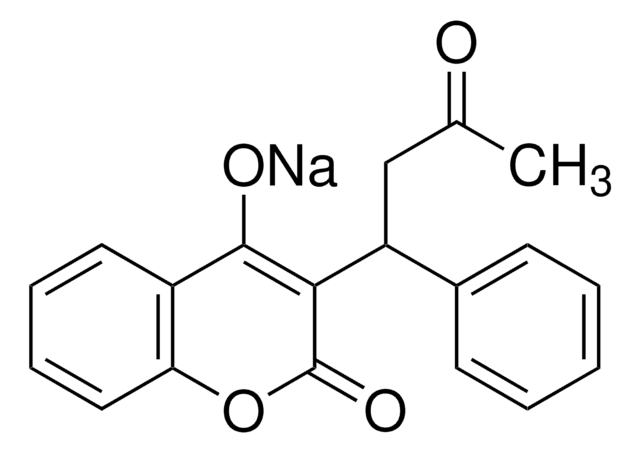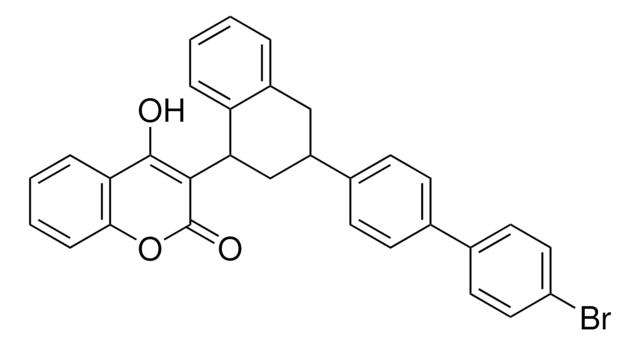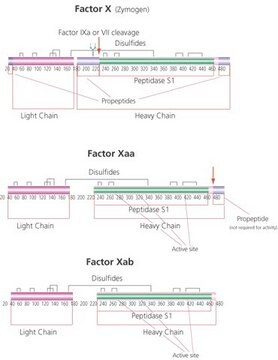1719000
USP
Warfarin
United States Pharmacopeia (USP) Reference Standard
Sinônimo(s):
4-Hydroxy-3-(3-oxo-1-phenylbutyl)coumarin, Coumafene
About This Item
Produtos recomendados
grau
pharmaceutical primary standard
família API
warfarin
fabricante/nome comercial
USP
pf
162-164 °C (lit.)
aplicação(ões)
pharmaceutical (small molecule)
formato
neat
temperatura de armazenamento
2-8°C
cadeia de caracteres SMILES
CC(=O)CC(c1ccccc1)C2=C(O)c3ccccc3OC2=O
InChI
1S/C19H16O4/c1-12(20)11-15(13-7-3-2-4-8-13)17-18(21)14-9-5-6-10-16(14)23-19(17)22/h2-10,15,21H,11H2,1H3
chave InChI
PJVWKTKQMONHTI-UHFFFAOYSA-N
Informações sobre genes
human ... VKORC1(79001)
Procurando produtos similares? Visita Guia de comparação de produtos
Descrição geral
Aplicação
- Warfarin Sodium
- Warfarin Sodium Tablets
- Warfarin Sodium for Injection
Nota de análise
Outras notas
Informações legais
Palavra indicadora
Danger
Frases de perigo
Declarações de precaução
Classificações de perigo
Acute Tox. 1 Dermal - Acute Tox. 1 Inhalation - Acute Tox. 2 Oral - Aquatic Chronic 2 - Repr. 1A - STOT RE 1 Oral
Órgãos-alvo
Blood
Código de classe de armazenamento
6.1A - Combustible acute toxic Cat. 1 and 2 / very toxic hazardous materials
Classe de risco de água (WGK)
WGK 3
Ponto de fulgor (°F)
Not applicable
Ponto de fulgor (°C)
Not applicable
Certificados de análise (COA)
Busque Certificados de análise (COA) digitando o Número do Lote do produto. Os números de lote e remessa podem ser encontrados no rótulo de um produto após a palavra “Lot” ou “Batch”.
Já possui este produto?
Encontre a documentação dos produtos que você adquiriu recentemente na biblioteca de documentos.
Os clientes também visualizaram
Nossa equipe de cientistas tem experiência em todas as áreas de pesquisa, incluindo Life Sciences, ciência de materiais, síntese química, cromatografia, química analítica e muitas outras.
Entre em contato com a assistência técnica









